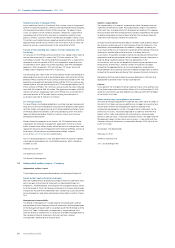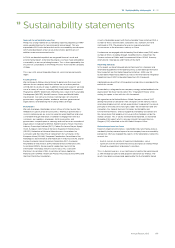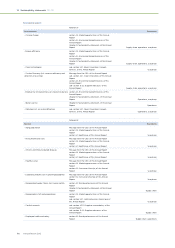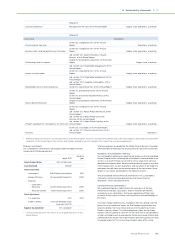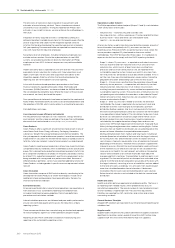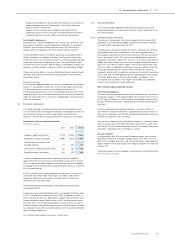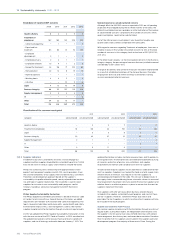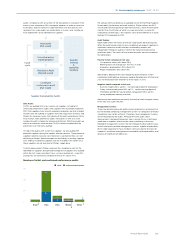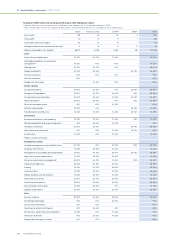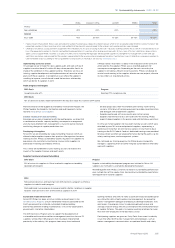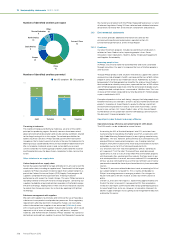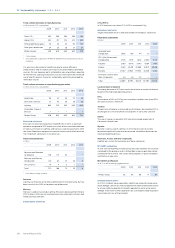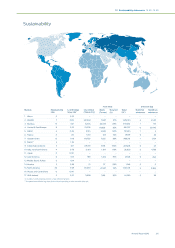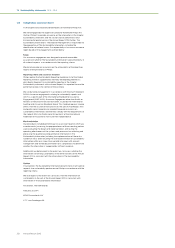Philips 2013 Annual Report Download - page 202
Download and view the complete annual report
Please find page 202 of the 2013 Philips annual report below. You can navigate through the pages in the report by either clicking on the pages listed below, or by using the keyword search tool below to find specific information within the annual report.
13 Sustainability statements 13.2.1 - 13.2.2
202 Annual Report 2013
Breakdown of reported GBP concerns
2009 2010 2011 2012 2013
Health & Safety 6 3 2 11 3
Treatment of
employees 162 184 132 205 203
- Collective bargaining − 1 − 1 5
- Equal and fair
treatment 63 64 41 72 80
- Employee
development 3 1 − − 4
- Employee privacy 2 2 1 1 1
- Employee relations 15 4 1 2 5
- Respectful treatment 53 96 71 102 84
- Remuneration 22 12 6 15 15
- Right to organize − − − 1 −
- Working hours 4 4 2 − 3
- HR other − − 10 11 6
Legal 4 13 10 19 9
Business Integrity 88 112 107 119 109
Supply management 4 4 3 3 5
IT − − − − 6
Other 54 22 15 17 −
Total 318 338 269 374 335
Substantiated versus unsubstantiated concerns
Although 89 of the 335 GBP concerns reported in 2013 are still pending
(especially those lodged during the last three months of the year), the
table of investigated concerns provides an initial indication of the number
of substantiated concerns compared to the number of concerns which,
upon investigation, could not be substantiated.
Out of the 246 concerns investigated, it was found that roughly one
quarter (28%) were justified, comparable with 2012 (26%).
With regard to concerns regarding Treatment of employees, there was a
notable increase in the number of justified concerns to 20% of the total
number of concerns in this category, back to the level of 2011 (2012: 13%,
2011: 21%).
In the other major category, i.e. the investigated concerns in the Business
integrity category, the percentage of concerns that was justified increased
considerably to 50% (2012: 42%).
A range of disciplinary and corrective measures have been implemented
as a result of established violations of the General Business Principles,
ranging from dismissal and written warnings to awareness training
sessions and organizational measures.
Classification of the concerns investigated
2011 2012 2013
category substantiated unsubstantiated substantiated unsubstantiated substantiated unsubstantiated
Health & Safety − 2 2 7 − 2
Treatment of employees 18 68 22 150 33 136
Legal − 5 5 8 2 2
Business Integrity 33 43 37 51 32 32
Supply Management 2 1 1 − − 3
IT − − − − 3 1
Other 3 5 11 4 − −
Total 56 124 78 220 70 176
13.2.2 Supplier indicators
In addition to our own sustainability activities, we also engage our
suppliers and their suppliers toward better sustainability practices. To that
end, we are active in various supply chain initiatives around the world.
Philips has a direct business relationship with approximately 10,000
product and component suppliers and 30,000 service providers. Given
the size and complexity of our supply chain we need to focus our eorts.
Therefore, we developed an approach based on the supplier’s
sustainability risk profile related to spend, country of production, business
risk and type of supplier relationship. The risk profile is used to select
suppliers for inclusion in our sustainability audit program, conflict
minerals, hazardous substance management and IDH Electronics
program.
Philips Supplier Sustainability Declaration
The Philips Supplier Sustainability Declaration is based on the EICC Code
of Conduct and in line with our General Business Principles, we added
requirements on Freedom of Association and Collective Bargaining. The
topics covered include labor and human rights, worker health and safety,
environmental impact, ethics, and management systems. We monitor
supplier compliance to the Declaration through a system of regular audits.
In 2012 we updated the Philips Supplier Sustainability Declaration, in line
with the new version of the EICC Code of Conduct. In 2013, we rolled-out
the updated Declaration via the new purchasing contracts signed with
suppliers, and via all trainings and audits done per January 1, 2013. The
updated Declaration includes 4 entirely new provisions, and 14 updates to
existing provisions. The new provisions are related to responsible sourcing
of minerals, protection of privacy, non-retaliation, and supplier
responsibility to monitor code compliance at next tier suppliers.
The Declaration requires suppliers to cascade the EICC Code down to their
next tier suppliers. Suppliers must regard the Code as a total supply chain
initiative and at a minimum, also require its next tier suppliers to
acknowledge and implement the Code. This roll-out to deeper levels in
the supply chain is reviewed during the on-site audits, where it is assessed
how requirements have been communicated to the next tier suppliers and
whether there is an eective process in place to ensure that the next tier
suppliers implement the Code.
Risk suppliers with who we have a direct business relationship are
included in the supplier sustainability audit program, and most of these
are tier 1 suppliers. However, sometimes Philips also selects and
prescribes the tier 2 suppliers, in which case these tier 2 suppliers will also
be included in the audit program.
Supplier Sustainability Audit Program
We monitor supplier compliance with the Declaration through a system of
regular audits. During these audits, an independent external party visits
the supplier’s site for several man-days to hold interviews with workers
and management, do a factory tour, and review documentation. Based on
their risk profile, 572 risk suppliers are included in the supplier audit and
development program; the majority of these are in China. During the






